Protein treatments for hair have been available for years. They’re advertised as a way to revitalize damaged hair, make sure healthy hair stays that way, and keep your locks looking their most luscious.
And while haircare can be a minefield of false promises, fortunately, protein treatments are legit. There’s plenty of science backing their effectiveness, and with such a wide variety of options available, there’s a protein treatment for almost every head of hair.
Here’s everything you need to know.
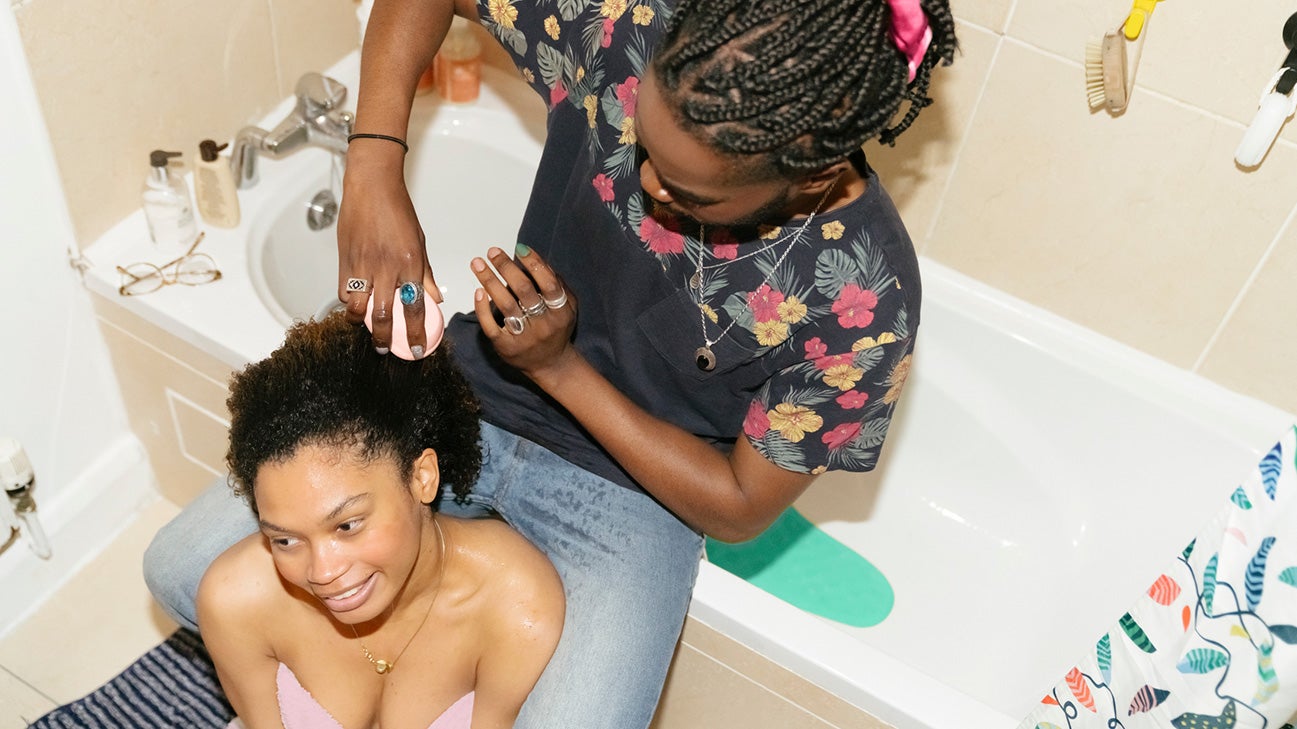
Benefits of protein treatments for hair
If you want to get biology about it, hairs are complex fibers made of a bunch of stuff including dead cells, water, lipids, pigments, and some trace elements. The MVPs of hair are proteins though, mai
nly keratin. Matter of fact, proteins make up as much as 95 percent of every strand. So, they’re pretty important.
Just like muscles, hair needs protein to keep healthy and strong, especially further from the root where a steady supply of dietary protein via the scalp isn’t available. Fortunately, hair’s porous cellular structure is super absorbent and can soak up extra proteins from hair products with no problem. That’s why external application of proteins like keratin is beneficial (they’ve done science and everything).
Protein treatments attach hydrolyzed proteins directly to the hair. Dietary protein is important for healthy hair, but an extra protein boost almost always helps too. Here are six reasons why:
1. They strengthen hair (and possibly reduce hair loss)
By replacing proteins lost at the roots and follicle rows, protein treatments keep hair strong and less prone to falling out.
A comprehensive review of alternative treatments for alopecia included marine proteins. Several trials indicate products derived from marine proteins “promote growth of terminal and vellus hairs, increase hair shaft diameter, and decrease hair loss”. Translation: They reduced hair loss and made hair stronger.
More research is needed on the hair loss bit (if it wasn’t, male pattern baldness wouldn’t be a thing still, right?). However, the “protein=stronger hair” part has been replicated many times.
2. They provide protection from damage
Protein treatments harden the cuticle layer of hair. That’s the outermost layer, FYI. They literally help your hair armor up.
This increased protection isn’t just a tiny +1 damage resistance. Studies like this trial on hair swatches from 2021 found that a protein and polycarbohydrate-based treatment led to a significant resistance to chemical damage from bleaching and harsh dyes.
Chemical hair structure damage from bleaching and coloring can be a big problem if you ain’t happy with the hair pigment your mama gave you. Protein products are basically a must if you’re into dying your hair, especially if it’s on the regs.
3. They help to repair and restore damaged hair
Proteins lost in damaged areas of the hair’s structure are replaced by ones absorbed from your protein-rich shampoo/conditioner/treatment/mask/whatever.
Trials like this 2018 study of recombinant keratin K31 treatment found the additional protein led to a huge boost in mechanical strength and increased strand diameter up to 49% in chemically damaged hair.
So, if your hair is already damaged, protein treatment will help.
4. They improve hair elasticity
Hair with low elasticity will snap instead of stretch when pulled. FYI: If you leave behind enough on your hairbrush to go into wig-making, it might be because your hair isn’t elastic enough. Elasticity is also make-or-break for stylable hair that does what it’s told.
As per this 2017 review, keratin protein treatments are used to straighten hair. Keratin straightening is a specific product and process (protein shampoo won’t kill your curls, don’t worry). However, one of the ways it works is by upping the elasticity of the treated hair so the strong chemicals and pulling straighten the hair instead of breaking it.
It’s often overlooked as a measure of healthy hair, but low elasticity can be a key cause of shedding. Improved elasticity is a vital benefit of protein treatments, one that you’ll definitely notice.
5. They reduce breakages and split ends
What with the increased strength, protection, and elasticity, the fact that protein treatments significantly reduce breakages and split ends isn’t a shock. Regular protein treatments keep hair strong, healthy, and resilient.
Weak, damaged, or unhealthy hair breaks easily and is prone to split ends. Hair needs protein to prevent or repair split ends/breakages. A protein treatment provides just that.
6. They help improve the look of your hair, altogether
There are no two ways about it – healthy hair just looks better. It’s not vain or shallow to admit we want one of the defining features of our head to look decent. And protein-enriched hair products help get your hair looking its healthiest.
5 best protein treatments for hair
Let’s face it: the “best” protein treatments will depend on the individual, but there’s definitely some that universally shine through. We’ve scoured the market and picked out five of the best protein treatments available (and explained why they’re good).
1. Ion Rapid Repair Kit
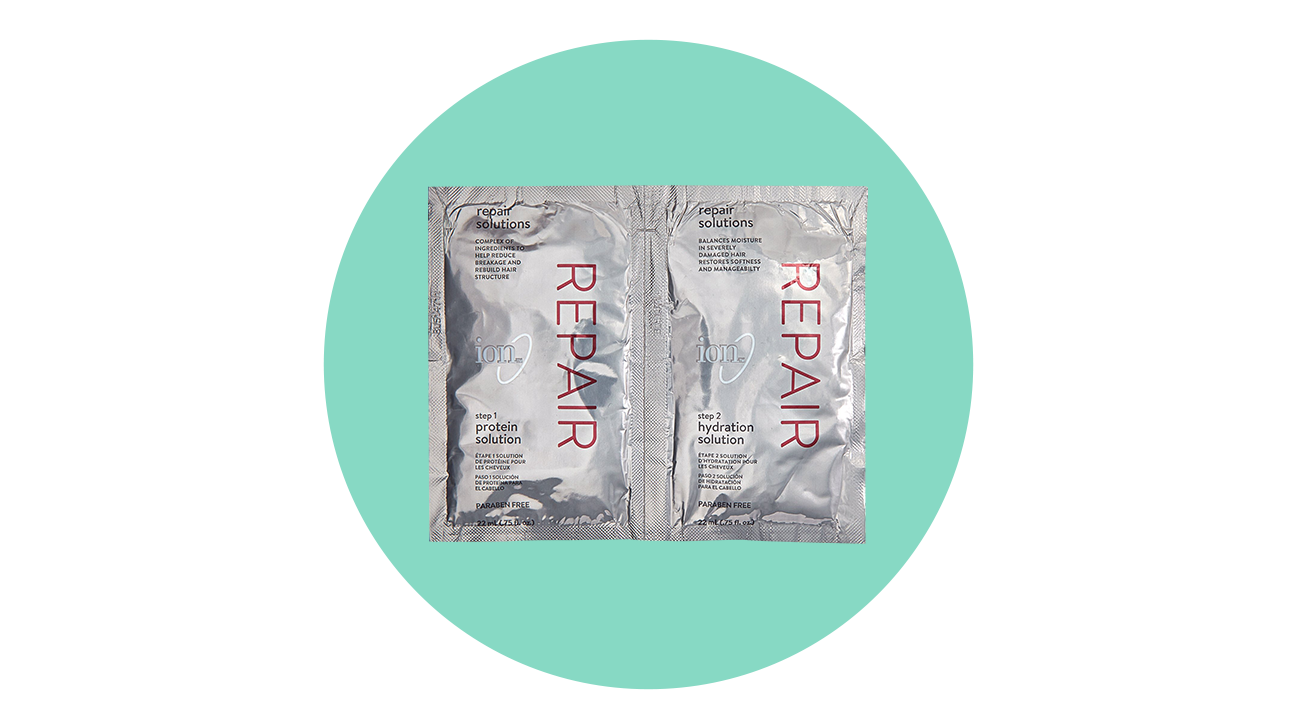
The Rapid Repair Kit from Ion is 100% vegan and contains keratin amino acids, glycerin, and castor oils. It’s a two-step application you do every four-six weeks, and is especially great for moisturization as well as hair strength.
The kit contains two parts, a protein solution and a hydration solution. The protein solution contains strengthening ingredients that are heat-activated, after which, the hydration solution is applied. The chemical reaction between the two is the secret sauce of the kit, according to Ion.
2. Aphogee Keratin 2 Minute Reconstructor
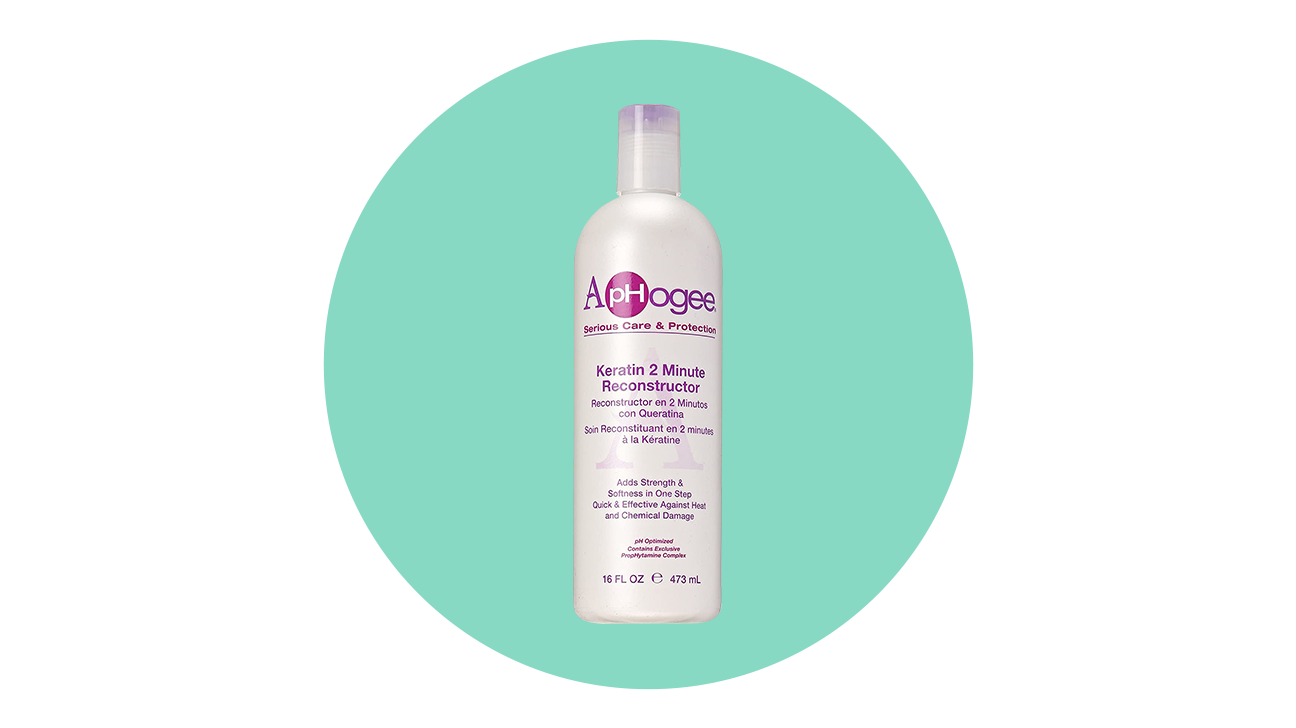
Aphogee’s Keratin 2 Minute Reconstructor is perfect for hair that’s regularly exposed to chlorine and/or hard water. It’s easy as heck to apply too. Squeeze a dollop on your palm, work it into your hair and scalp, leave for a couple minutes, then rinse. Presto!
You can apply it as often as you like. If you’re located somewhere where heat damage and hard water are a problem, or you’re a regular swimmer, this is. Even if not, the 2 Minute Reconstructor is a great alternative for peeps who CBA to do an intensive protein treatment once a week/month.
3. ELIZAVECCA CER 100 Collagen Ceramide Coating Protein Treatment
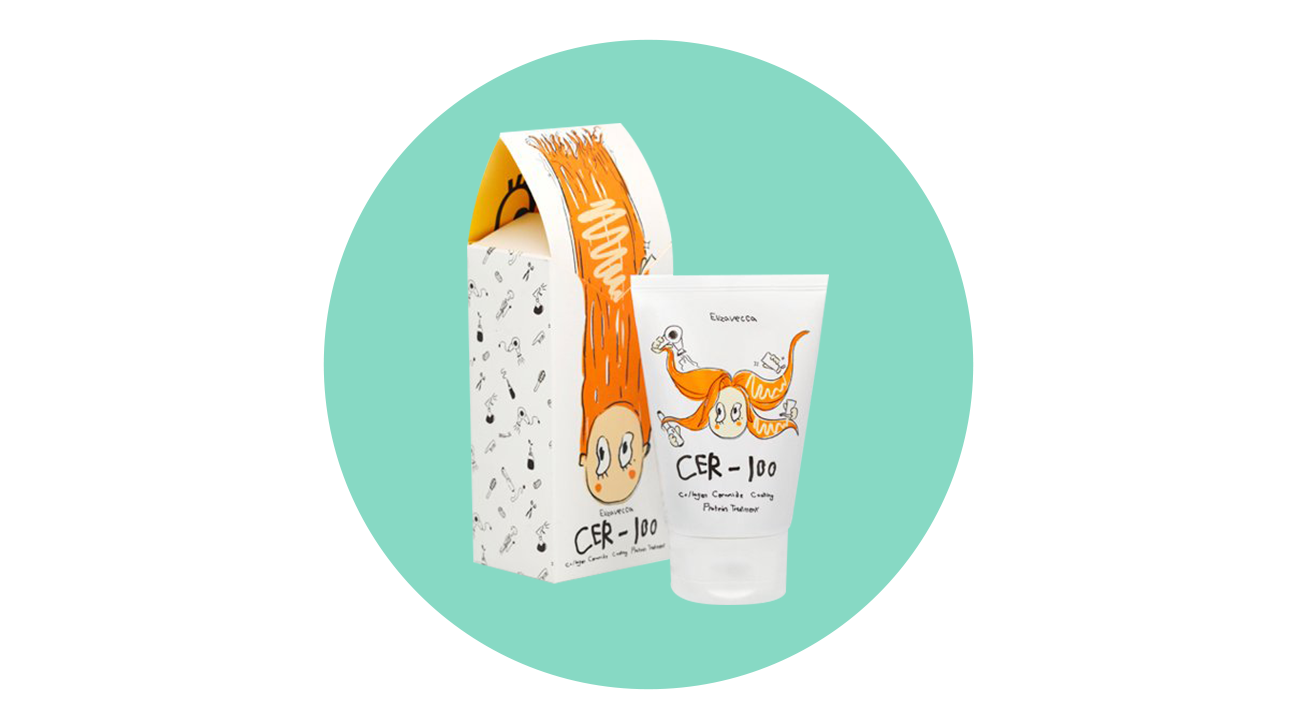
Aside from coming in the most adorable packaging you’ve ever seen, Elizavecca’s CER-100 Collagen Ceramide Coating Protein Treatment is one of the best protein treatments on the market.
Ceramides are lipids found in skin and hair cells, and they give an extra protection boost in addition to the keratin. Collagen’s more known for skincare, but hair can use amino acids in it to build proteins, which is useful, obviously.
This is another product that’s super easy to apply. Simply work the treatment into dried, shampooed hair, leave for five minutes, then rinse out with warm water. Leave in longer for damaged hair/a stronger treatment.
4. Olpalex No.3 Hair Perfector

For a pricier option, well-known brand Olpalex No.3 Hair Perfector is a solution that uses an advanced bond-building formula. It reconnects broken hair bonds, making it top tier at repairing damaged hair. It doesn’t matter if the damage is chemical, thermal, or mechanical, either – No.3 won’t steer you wrong.
Olpalex No.3 should be left in for 10 minutes, and used once every three weeks. The price tag might be slightly higher than some other options, but by all accounts, the results speak for themselves.
5. OGX Extra Strength Hydrate and Repair
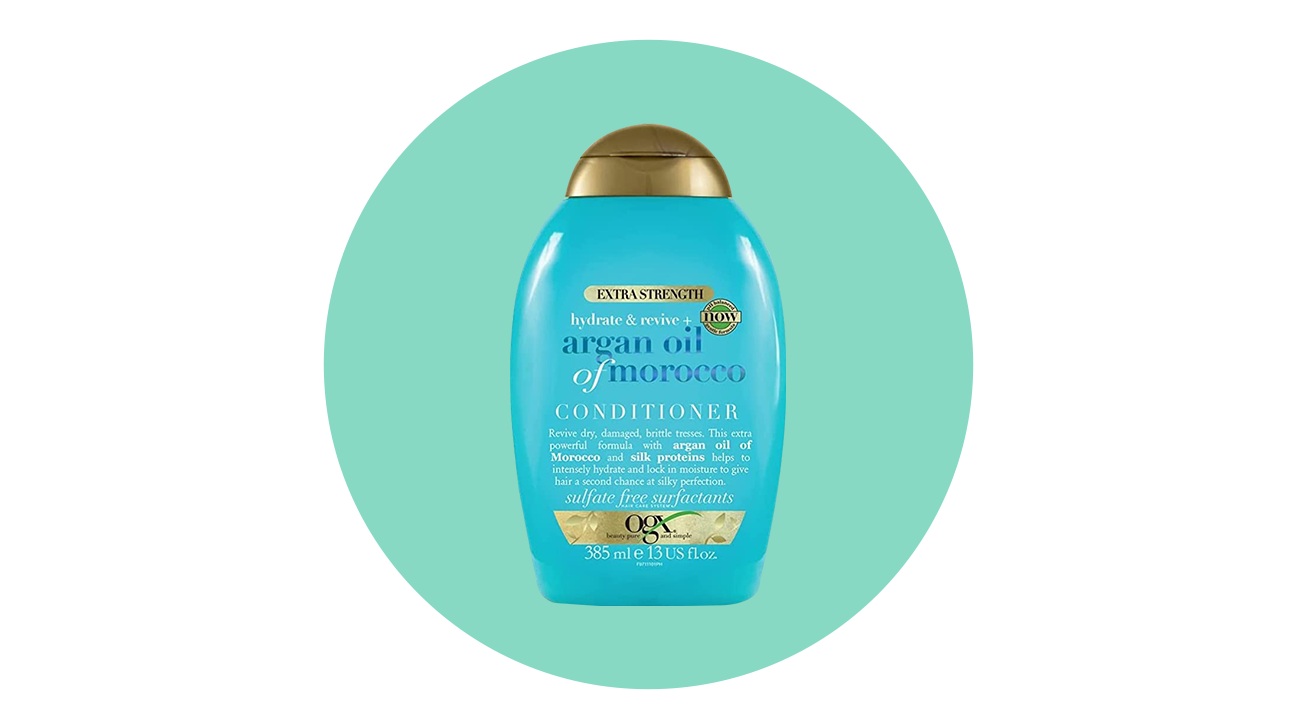
Natural oils are also hella good for hair. OGX Extra Strength Hydrate and Repair is a protein-enriched hair mask containing argan oil, making for softer, shinier hair. Silk proteins were specifically selected because they also lead to… well, silkier hair.
Note: If your hair already has excess oils from your scalp, then products rich in natural oils might do more harm than good. If you don’t already have naturally oily hair, this is a great shout at less than $10 per bottle.
How to use protein treatments for hair
Protein treatments are super easy to do. You don’t even need to go to a salon. Many different products are available, but they’re all used pretty much the same way (unless the packaging says otherwise).
Once you’ve got your hair cleaned and conditioned:
- Apply the treatment, covering your hair from scalp to tip. Apply evenly using a wide-toothed comb.
- Cover your hair with a shower cap.
- Blow-dry on low heat. Do this evenly to avoid burns.
- Uncover your hair and rinse.
Unless your hair is particularly damaged, you shouldn’t need to do this more than once per week/month, depending on scalp and hair condition.
Some treatments come in the form of high-protein shampoos and conditioners that can be used like you would during a normal wash. Salon protein treatments are available, but many include other harsh chemicals that can damage hair, such as formaldehyde.
We’re not saying don’t have salon protein treatments, but the at-home method gives you more control over what’s being popped onto your locks.
Does hair type matter?
Different hairs need different cares. Hair condition and intended usage are more relevant to protein treatments than hair type, though. Light protein treatments are more suited for routine care. For repairing damaged hair, an intensive treatment with a higher protein content is better.
Protein is beneficial for all hair types, but some treatments are more effective with certain hair types than others. Most products advertise clearly on the packaging if they’re for a specific hair type. This is especially true for Black hair in recent years, as many brands and stores are finally recognizing Black hair care needs and stocking products that cater to it.
Ingredients you should stay away from
Many hair care products contain harmful hair-damaging chemicals. Protein treatments are no exception. Always check ingredients before using any new hair product, and for best results, it’s advised to avoid the following:
- Formaldehyde.
- Cocamide DEA.
- Isopropyl Alcohol.
- Parabens.
- Polyethylene Glycol.
- Silicones.
- Sulfates.
Will these chemicals make your hair fall out after one treatment? No. They can damage hair with long-term use, however.
Formaldehyde is an exception. That one is a major irritant that can prompt asthma-like symptoms and is a known carcinogenic. Avoid that one at all costs.
Bottom line
Hair is made mostly out of proteins, with keratin being the most common. Since hair is always growing and gets damaged by everything from chemicals to air humidity, it needs a constant resupply. Protein treatments are a great way of making sure demand is always met by attaching hydrolyzed proteins directly to each strand. These proteins are absorbed into the hair itself, the follicles, and scalp.
Protein treatments come in different forms. Some are repeated every six weeks, others are wash in/wash out solutions. They’re effective for all hair types, although tailored treatments are available for specifics like thin hair or Black hair. They’re mostly safe, but care should be taken to avoid common dangerous chemicals like Formaldehyde.

0 Commentaires